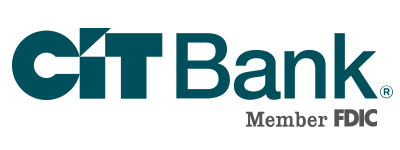Pros:
- Higher rates than typical banks
- Good variety of accounts online
- Free ATM transactions
- Digital Wallet
Cons:
- Monthly fees for most accounts
- High opening required amounts
- Must wait for accounts to activate
- Tiered interest rates on accounts
Pros:
- Competitive interest rates on accounts
- Some business accounts offered
- No minimum balance or monthly fees
- Earn high interest on any amount
Cons:
- Only savings account and CDs offered
- Linked external accounts required
- CDs have large opening required amounts
- No checks or debit card offered
The interest rates for Sun Canyon are higher than typical bank rates, but lower than online accounts. The accounts do have tiered interest rates. But even the lowest tier rates are higher than typical bank rates.
Sun Canyon Bank offers online accounts. Those accounts include:
- Checking account
- Savings account
- Money market account
- Standard CDs in 6, 12, and 24-month terms
Sun Canyon allows for eight ATM transactions each month, or up to $25 per billing cycle, free of fees. The other banking institution may charge a fee. Sun Canyon will not charge a fee for those first ATM transactions.
Through the mobile app, you can make purchases and payments with Sun Canyon Digital Wallet. You load your debit card into the mobile app. You can then make purchases. Sun Canyon also supports Apple, Google, and Samsung Pay.
Most Sun Canyon accounts have fees. The money market fee is $10. To avoid fees, you must keep at least $2,500 in the account. The savings account has a fee of $5 per month. To avoid this fee, you must have a balance of at least $250. The checking account has a fee of $5 if you have less than $5,000 in your checking account. To waive the fees, you can also have set combined balances. The savings account requires $2,500 in combined accounts. The MMA requires $5,000, and the checking account requires $20,000 in combined accounts.
The opening required amounts for Sun Canyon accounts are high. The savings account requires $250 to open. The checking account requires $1,000 to open. The CDs all require $1,000 to open. The money market account requires $2,500. You must keep these amounts in the accounts to avoid the monthly fees.
Apply for an account with Sun Canyon by filling out an application online. Once your application is complete, customer service sends an email when the account activates. You can start using the account once you receive the email.
To earn the most competitive rates, you must have a high account balance. The checking account requires $50,000 for the best rates and the money market requires $100,000. The savings account requires $250,000. Balance over $250 for the savings account and over $2,500 for the MMA and checking accounts earn interest, just not the highest rate.
The interest rates of Live Oak Bank accounts are competitive. They are much higher than your typical brick and mortar bank rates. Account rates are competitive with other online-only accounts.
Live Oak Bank offers a few business accounts. They offer a savings account and CDs. There are seven CD terms offered for small business accounts. The terms range from six months to a five-year CD. The longer the CD term, the higher the interest rate offered.
There is no required amount to keep in a Live Oak savings account. There is no monthly fee. If your account gets to $10.01 and is inactivated for 24 consecutive months, you will be charged a fee. Live Oak Bank will then close the account. If you make more than six withdrawals per month, you will be charged $10 for each transaction.
Live Oak Bank savings account and CDs offer competitive interest rates. You earn the highest interest rates on any amount deposited in the accounts. There is no set balance required to earn the highest interest rates offered.
The only accounts offered are a savings account and CDs. These are the only accounts offered for personal banking, as well as business banking. There are seven different CD terms available. The terms range from six-months to five-years.
To open a Live Oak Bank, you must link an external checking account. Live Oak Bank does not offer a checking account. To make electronic transfers requires a linked checking account.
Live Oak Bank CDs have a large opening amount for each term. The opening amount required is $2,500 for each CD term. The different CD terms range from a six-month term to a five-year term.
There are no checks or debit cards available for Live Oak Bank accounts. The only way to access your money is to make an electronic transfer. Once you make the transfer online, the money will be available within one to two business days. Anything transferred after 4:00 p.m. is processed the next business day. Federal regulations only allow for six withdrawals each billing cycle.


